Site Selection’s 2021 winners illustrate exactly why a per capita Governor’s Cup was added to this annual facilities race with the 2013 Governors’ Cups. The original Cup always recognized the state with the most qualified capital investment projects the previous calendar year. For eight years now, Site Selection has also recognized qualified projects per capita, bestowing an equally prestigious Cup on the state fitting that bill.
As this year’s project tallies show, a state such as Kansas that would appear well outside the Top 10 states in total overall projects can find itself atop the per capita ranking with 139 projects. Total projects number 10 state Florida has 217. Modestly populated states are economic development giants, too. The same goes for South Dakota that clinched second place per capita with 41 projects. Kentucky places third with 199 followed by Ohio with 507 and Nebraska with 78 to round out the top five.
For the Governor’s Cup for total projects, the contest was a runaway. For the 10th consecutive year, Texas wins this race — this time with 1,123 qualified projects. That’s 342 more than last year’s 781 total, and it’s more than twice the number of second place Ohio’s 507. Placing third is Illinois with 480, followed by California with 301 and North Carolina with 282.
Projects qualifying for inclusion in these facilities races are private-sector capital investment that meets one or more of these criteria: investment of US$1 million or more, creation of 20 or more new jobs or 20,000 sq. ft. or more of new space.
Kansas Governor Laura Kelly and Governor Greg Abbott of Texas — a new hand at winning and an old one, respectively — explain in the following pages how the West won the 2021 Governors’ Cups. But the governors of all ranking states, total projects and per capita, deserve congratulations for their states’ economic development success in a challenging year of economic recovery.
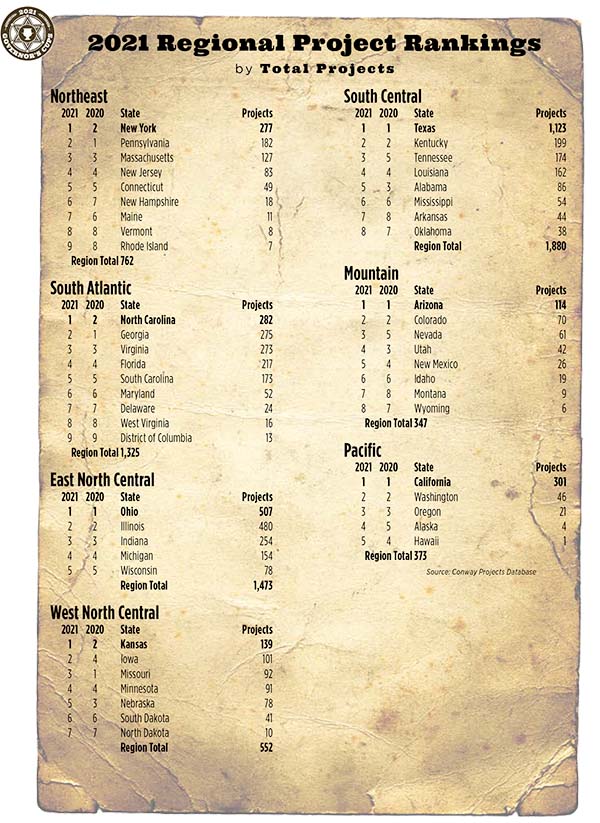
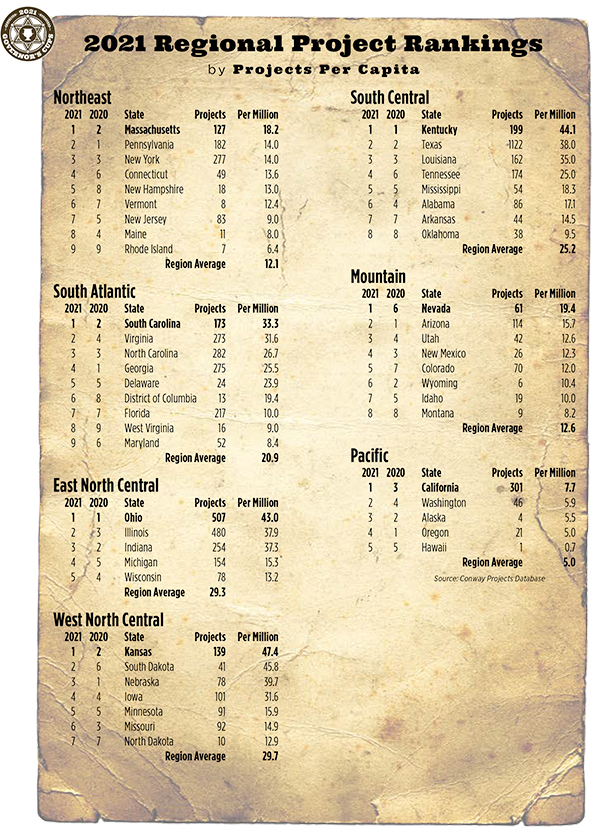
KANSAS
Days after Governor Laura Kelly learned of her state’s first-ever Governor’s Cup, she signed into law the Attracting Powerful Economic Expansion Act (APEX) designed to help Kansas compete nationally and globally for major economic development projects. She’s hoping to use it lure a 4,000-job, $4 billion project that Kansas was one of two states in the running for at press time. It would be the largest private-sector project in state history.
APEX grants major subsidies to companies that invest $1 billion over five years.
Signing the bill checks one priority off the first-term governor’s economic development to-do list.
“We’ve been working very, very hard and very strategically here in Kansas to grow our state, and it’s paying off. We’re very proud of what we’ve been able to accomplish here.”
— Kansas Gov. Laura Kelly
“We’ve been working very, very hard and very strategically here in Kansas to grow our state, and it’s paying off,” Gov. Kelly tells Site Selection. “We’re very proud of what we’ve been able accomplish here.” Over $8 billion in capital investment has come to Kansas since the governor took office in 2019.
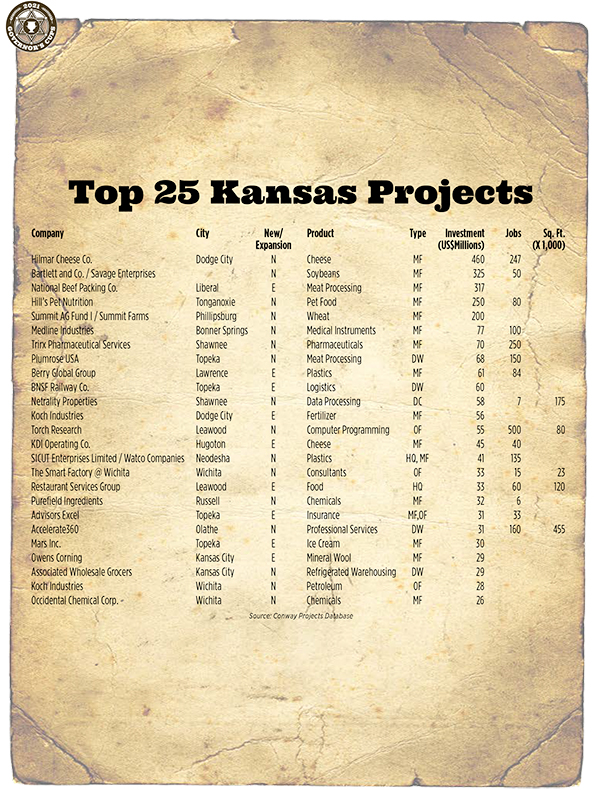
“The Department of Commerce that I inherited didn’t have the tools needed to recruit and retain businesses, to grow businesses,” says the governor. “One of the first things I did was hire the best Secretary of Commerce in the entire country — David Toland is so good I elevated him to Lieutenant Governor in addition to his Commerce role. I gave him the resources, and he put that agency back together such that we now have a robust International Trade division and domestic recruitment division. We created an office of rural prosperity to focus specifically on the needs of our rural communities to help them grow and thrive. And we’ve been incredibly aggressive.
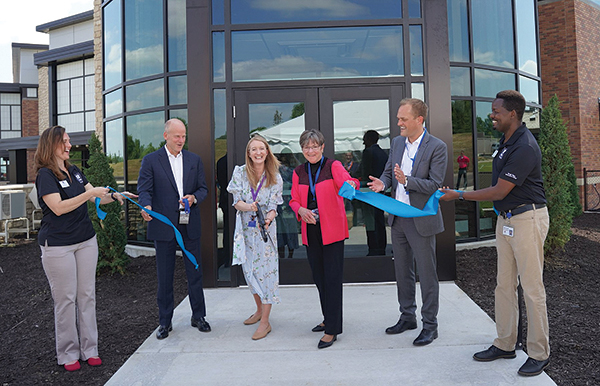
Photos of Governor Kelly at economic development functions are courtesy of the Office of the Governor.
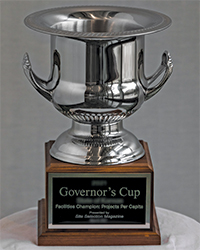 “But we’ve done that with a plan in mind,” adds the governor. “We developed the first real economic development strategic plan that Kansas has seen in 30 years, called the Framework for Growth. We tried to figure out what Kansas has, what we need and what we can do to grow. It helps focus us on the kinds of things that build on our strengths.
“But we’ve done that with a plan in mind,” adds the governor. “We developed the first real economic development strategic plan that Kansas has seen in 30 years, called the Framework for Growth. We tried to figure out what Kansas has, what we need and what we can do to grow. It helps focus us on the kinds of things that build on our strengths.
“One of the first things I did was hire the best Secretary of Commerce in the entire country — David Toland is so good I elevated him to Lieutenant Governor in addition to his Commerce role.”
— Kansas Gov. Laura Kelly
We’re focused on logistics and distribution, food processing and advanced manufacturing.
We have a bioscience corridor we are investing in. Kansas is also seeing success with wind energy. We figured out what our assets were and how to build on them, rather than competing for things that were never going to come here. We’re not Silicon Valley or New York City. Focusing on our strengths has worked, and we’re being recognized for it.”
In June, pet food manufacturer Hill’s Pet Nutrition announced it will invest more than $250 million in a 300,000-sq.-ft. plant in Tonganoxie that will create more than 80 jobs. The company cites “the location’s industrial park, strong community partnerships, workforce strengths and proximity to distribution requirements for the facility.” A major factor too is the location being part of the KC Animal Health Corridor, where more than 300 animal health companies have operations.
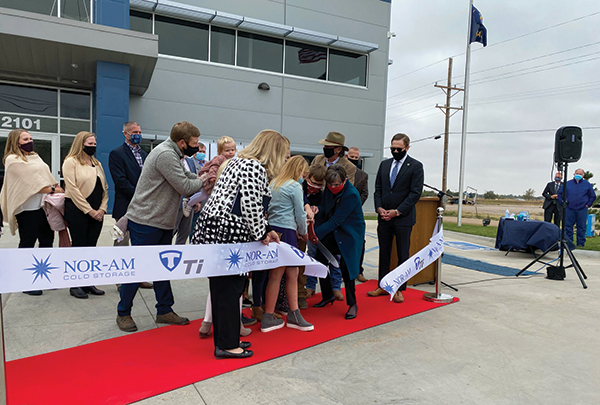
Nor-Am Cold Storage’s site in Dodge City, Kansas, fits a couple of the state’s target sectors: logistics and food processing.
“It would have been tragic if Hill’s Pet Nutrition had gone elsewhere,” says Gov. Kelly.
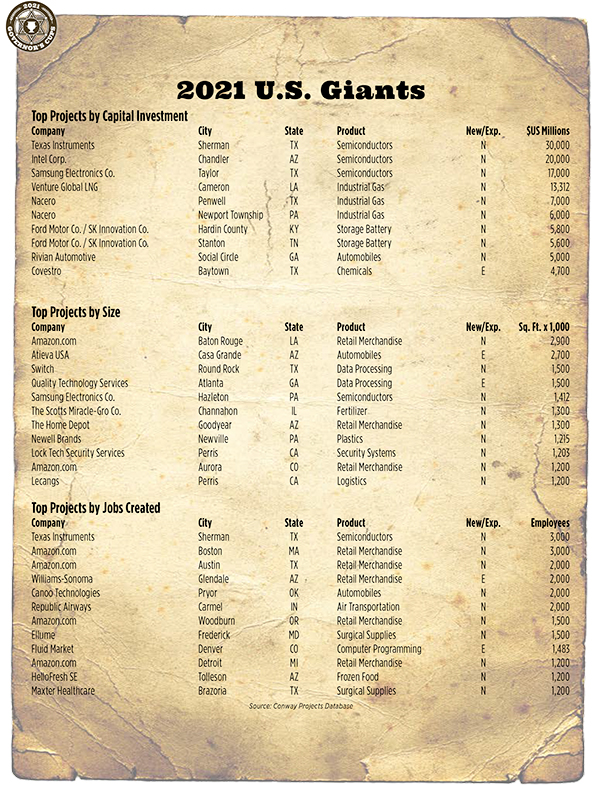
“Hill’s has a long history here in Kansas. It was founded here, and we worked with Hill’s to build on that. They need to grow their footprint, so whether we were talking about manufacturing and distribution — the project we have going in Tonganoxie — or their Small Paws Innovation Center at their research site in Topeka, we’ve worked closely with them to make sure that we could tailor our packages to meet their very specific needs.”
This illustrates another area where Kansas is building on its strengths, says the governor.
“We’re in the running for a $4 billion project, and that’s just the beginning. If we land the mother ship, then we will see suppliers coming in and locating right near it.”
— Gov. Laura Kelly
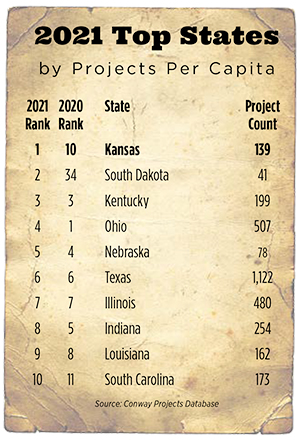 “We have some of the finest animal health and bioscience professionals in the world,” she notes. “The Animal Health Corridor extends from Manhattan, Kansas, where Kansas State University is, across I-70 to Columbia, Missouri, and the University of Missouri. These are two of the best veterinary schools in the country, if not the best.”
“We have some of the finest animal health and bioscience professionals in the world,” she notes. “The Animal Health Corridor extends from Manhattan, Kansas, where Kansas State University is, across I-70 to Columbia, Missouri, and the University of Missouri. These are two of the best veterinary schools in the country, if not the best.”
The New Fishing Lure
Gov. Kelly says Kansas has several incentives and programs that have worked well for the state, “and for the kinds of businesses we’ve been able to attract.” One, she says, is the High Performance Incentive Program that helps companies build and scale their operations. “We’ve always had incentives to provide training and retraining, which is incredibly important as our businesses evolve so quickly now. Promoting Employment Across Kansas, or PEAK, allows companies to bring on new workers and create jobs.”
But the governor is most enthusiastic about APEX, which she says “tremendously expands our portfolio. It’s important for us to be able to go after projects of more than $1 billion in capital investment. We’re in the running for a $4 billion project, and that’s just the beginning. If we land the mother ship, then we will see suppliers coming in and locating right near it. I believe 83 sites were considered by this company, and it’s now down to two, including Kansas. We hope to know by mid-March if we won, and we’re confident that we will. We have everything they need here, and they have everything we want. It will be 4,000 jobs, everything from kids getting out of high school to students getting career and tech-ed certificates to college graduates. It’s advanced manufacturing, so engineers who graduate from our three major universities will be able to stay here in Kansas.”
TEXAS
More than 1,100 qualified capital investment projects guarantee a top spot in the Governor’s Cup for total projects. That’s Texas’ haul for 2021, and no other state comes close. That’s why Governor Greg Abbott has added another Cup to his collection — the Lone Star State’s 10th consecutive one.
“We saw a record number of headquarters moves, too,” Gov. Abbott tells Site Selection.
“We had almost double the number of headquarters moves this past year than our second highest year.”
“A key part of our budget is making sure we provide a substantial investment in broadband so we are able to build that out as needed.”
— Gov. Greg Abbott
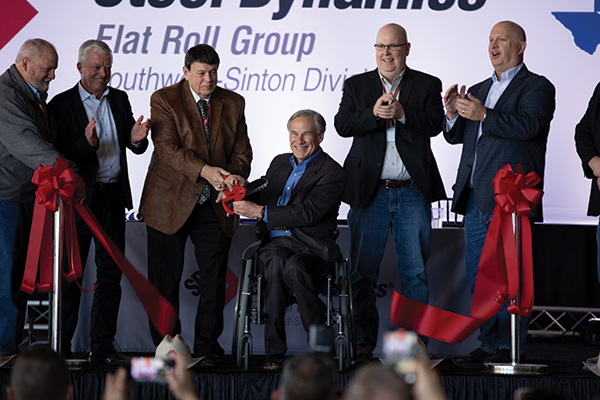
Photos of Governor Abbott at economic development functions are courtesy of the Office of the Governor.
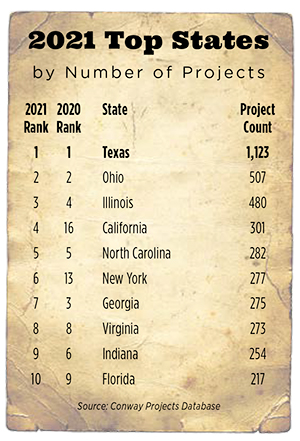 While not headquarters projects, Texas racked up $47 billion in capital investment in late 2021 from just two projects — a $17 billion semiconductor plant from Samsung in Taylor, near Austin, and a $30 billion one for Texas Instruments in Sherman, north of the Dallas-Fort Worth Metroplex. At press time, Micron Technology was reportedly scouting sites in Texas for another chip plant in Central Texas.
While not headquarters projects, Texas racked up $47 billion in capital investment in late 2021 from just two projects — a $17 billion semiconductor plant from Samsung in Taylor, near Austin, and a $30 billion one for Texas Instruments in Sherman, north of the Dallas-Fort Worth Metroplex. At press time, Micron Technology was reportedly scouting sites in Texas for another chip plant in Central Texas.
Gov. Abbott points out that more chip manufacturing increasingly is a national security issue.
“Our future will be tied to our capability to manufacture these chips,” he says. “Texas already had a good running start in chip manufacturing with both Samsung and Texas Instruments last year. Because we already had experience at this, it gave us a running start to be able to reach out to land these deals. Texas Instruments was the larger deal, and the Samsung project is a new record in Texas for being the largest foreign direct investment in the state’s history.”
Texas is landing such projects in part due to the move “to wean Texas off of being an oil and gas state, which is what we were back in the 1980s, and to have a more diversified economy. We have an extraordinarily diverse economy now, a component of which is microchips. When you have Samsung and Texas Instruments and so much going on in that area, it really helps our economy dramatically while at the same time helping our country.”
Commitment to Education
Asked about budget priorities of importance to site selectors, the governor points first to education.
“There are some things we want to continue to invest in that are important to businesses and people thinking about moving to Texas as well as to our fellow Texans,” he relates.
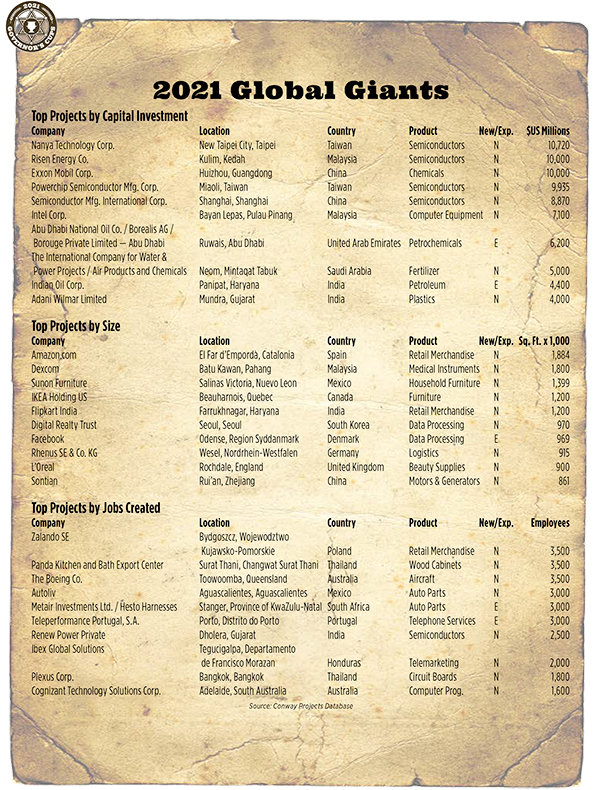
“We made an extraordinary commitment in our budget in 2019 that included a major increase in education. We maintained that investment and increased it in 2021. As always, one of the largest parts of our budget will be the investment we make in education, because we know the powerful role that plays not just in advancing the lives of our students but in providing the highly skilled workforce our employers need. Part of that relates to higher education.”
The governor’s first legislative session was in 2015 when other states were ahead of Texas in the number of Tier 1 research universities. “We rolled out a plan called the Governor’s University Research Initiative as well as others to increase investments in our universities — in part expanding the physical facilities, but the primary part was bringing in the top tier researchers from across the country. Each year we would add another tier 1 research university. As of this past year, Texas has more than doubled the number of tier 1 research universities. But even more so, Texas has now surpassed all other states, and we are the number one state in America for tier 1 research universities. That is what will provide the high-skilled workforce in advanced technologies like AI and robotics that our employers are increasingly looking for.”
“Texas already had a good running start in chip manufacturing both with Samsung and Texas Instruments last year. Because we already had experience at this, it gave us a running start to be able to reach out to land these deals.”
— Texas Gov. Greg Abbott
About 48 Connecticuts would fit in the State of Texas. All states are rolling out statewide broadband initiatives, but how does that happen in a geography so vast?
“Not only is it more complex than in smaller states, but the need here is greater,” says Gov. Abbott. “We have far larger, more vast rural regions that really need access to broadband.
Our goal is to deliver it statewide and in particular make sure that rural Texas will be operating at the same speed as Houston and Dallas and Austin. Our current project trajectory is to do a good mapping first and to then deploy the resources. Another key part of our budget is making sure we provide a substantial investment in broadband so we are able to build that out as needed. Given the size of the state it will be extraordinary, but we’ll map it our first and make sure we do it right.”
The Need for Speed
A recent blockbuster Texas project was Tesla’s headquarters relocation to Austin, and the governor says the EV sector is progressing rapidly. “One thing Elon Musk was really enamored by about Texas is the ability to move so quickly,” says the governor. “He has a need for speed in everything he does, and that includes building out this gigafactory outside of Austin. It is a project that would have taken five to 10 years in California. It took him 18 months here from breaking ground to completing more than a mile long factory. As I understand it, they are already manufacturing vehicles off the assembly line. The reason for that is how we accelerate the permitting process and not let government be the cause of loss of time.”
Elon Musk may soon be playing a role in helping get around Texas’ traffic choke points, which are a sign of the state’s rapid urban growth. “I gave the head of TxDOT that I appointed two instructions,” says Gov. Abbott. “One is to identify all the congestion points in Texas and eliminate them. The second is to move dirt so we are getting those roadways built. They have been very successful in building out that infrastructure very swiftly. Having said that, we are talking with Elon Musk’s The Boring Company to consider transportation options. They believe some of our transportation needs may be able to be addressed at a lower cost with less of an effect on surface area. We want to explore these new innovations.”

